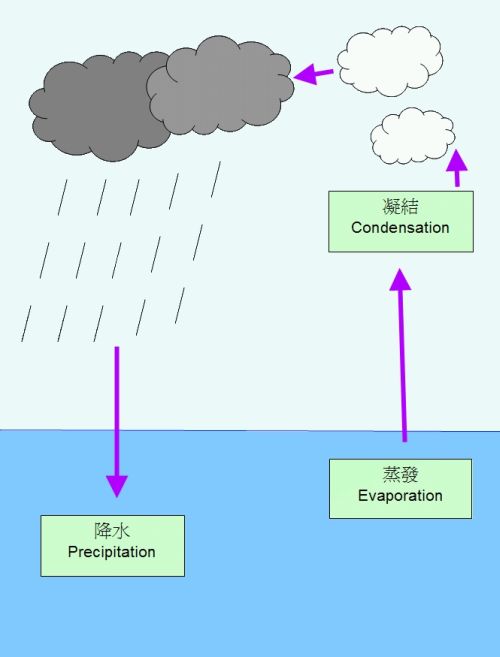Why does it Rain?
Why does it Rain?
WONG Chi-fai
June 2011
On a warm humid day, if we take a bottle of beverage from the refrigerator, we may notice that water will appear on the bottle surface. This is due to the property that cool air holds less moisture than warm air. In this case, water vapour invisible to human eye in the air is cooled on the surface of the bottle. Condensation takes place as the water vapour turns into visible water droplets.
In nature, water over ocean or on the surface of the earth evaporates into the atmosphere and forms water vapour. It becomes cooler as it rises in the atmosphere. Like the aforementioned case, the water vapour condenses on the surface of condensation nuclei such as dirt, dust and salt.
The water droplets in the sky come together to form clouds. Some clouds are light and puffy, while some are dark and heavy. Convection or rising air keeps the water droplets suspended in the air. However, the water droplets fall when they become too large and heavy to remain suspended in the air. Water falling from clouds in the form of rain, snow, hail or other forms is called precipitation (Figure 1).
It is interesting to note that if the lower atmosphere is dry, the precipitation may evaporate before it reaches the ground. This explains why rain echoes could sometimes be identified a few kilometers above the ground on the radar image, but no rainfall is recorded at the surface.

Figure 1 Rain is a common type of precipitation in our atmosphere.